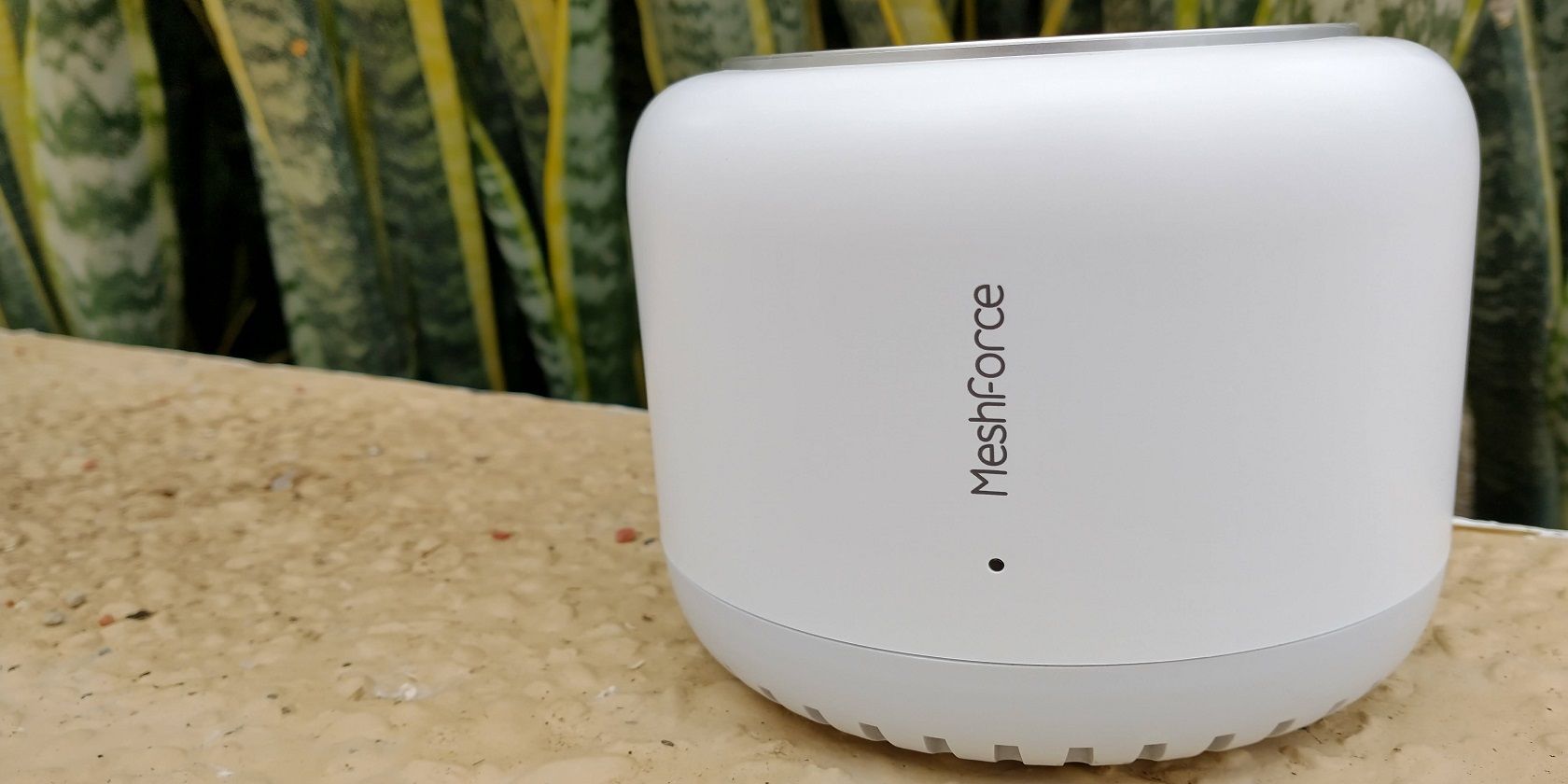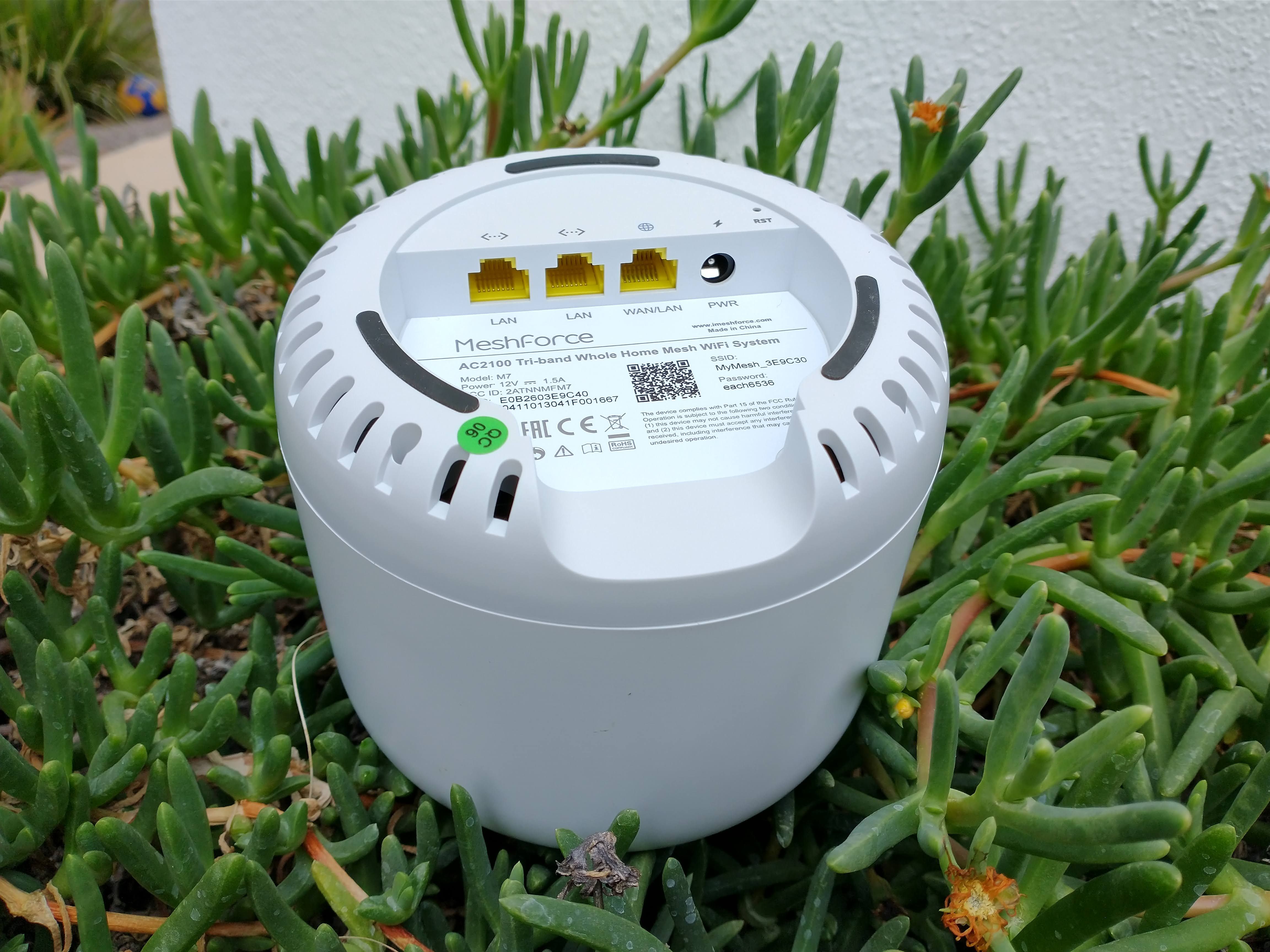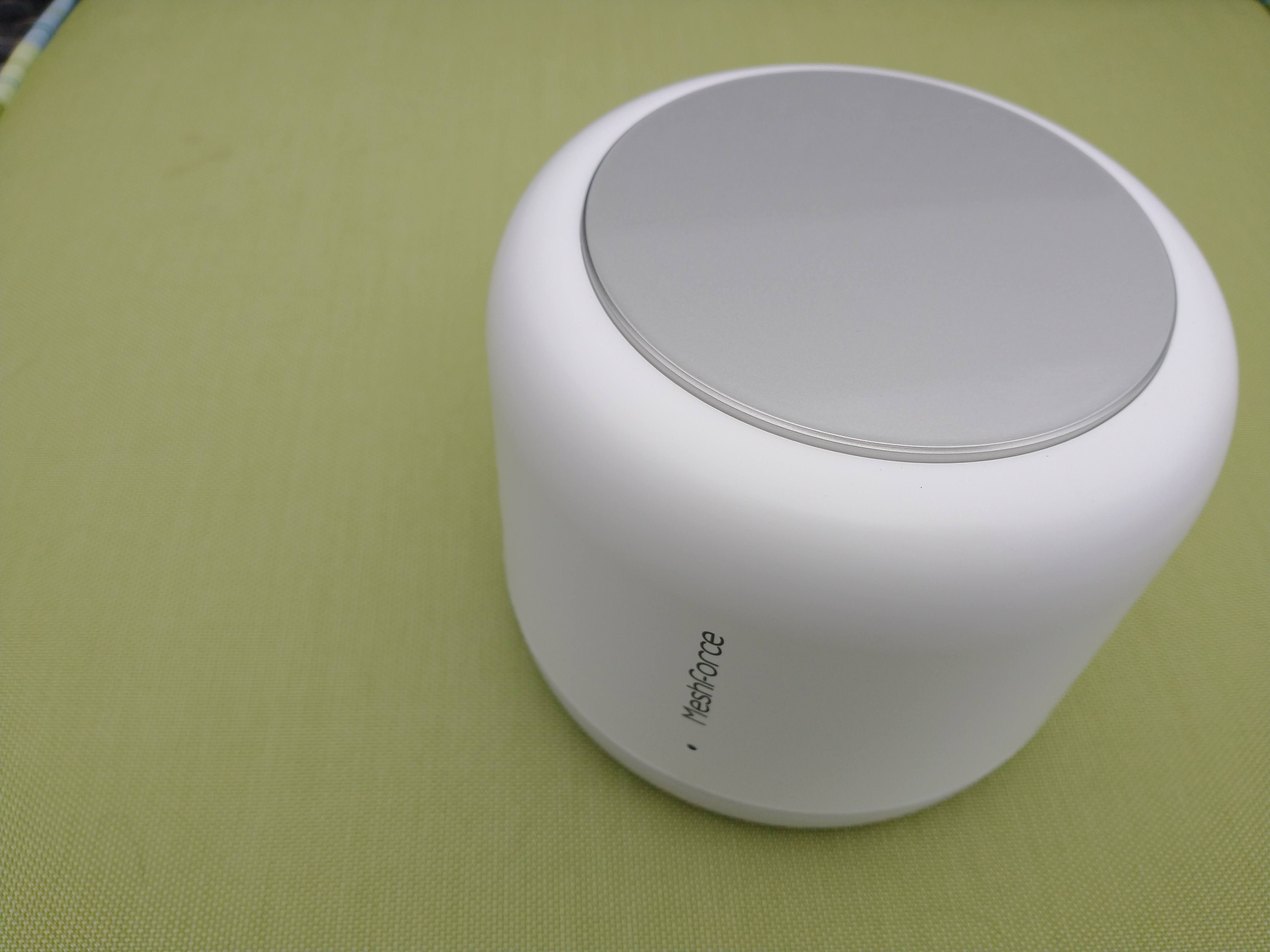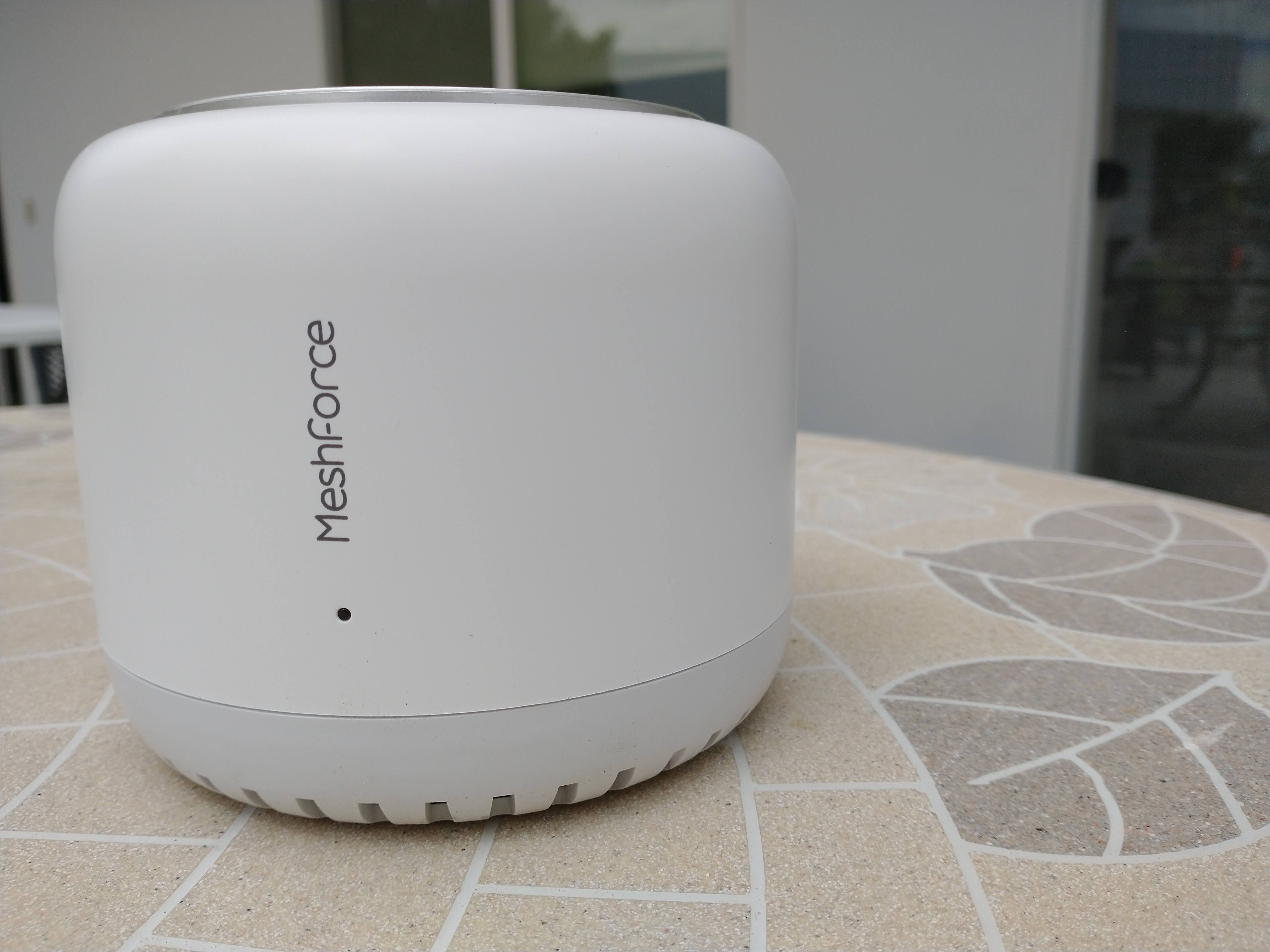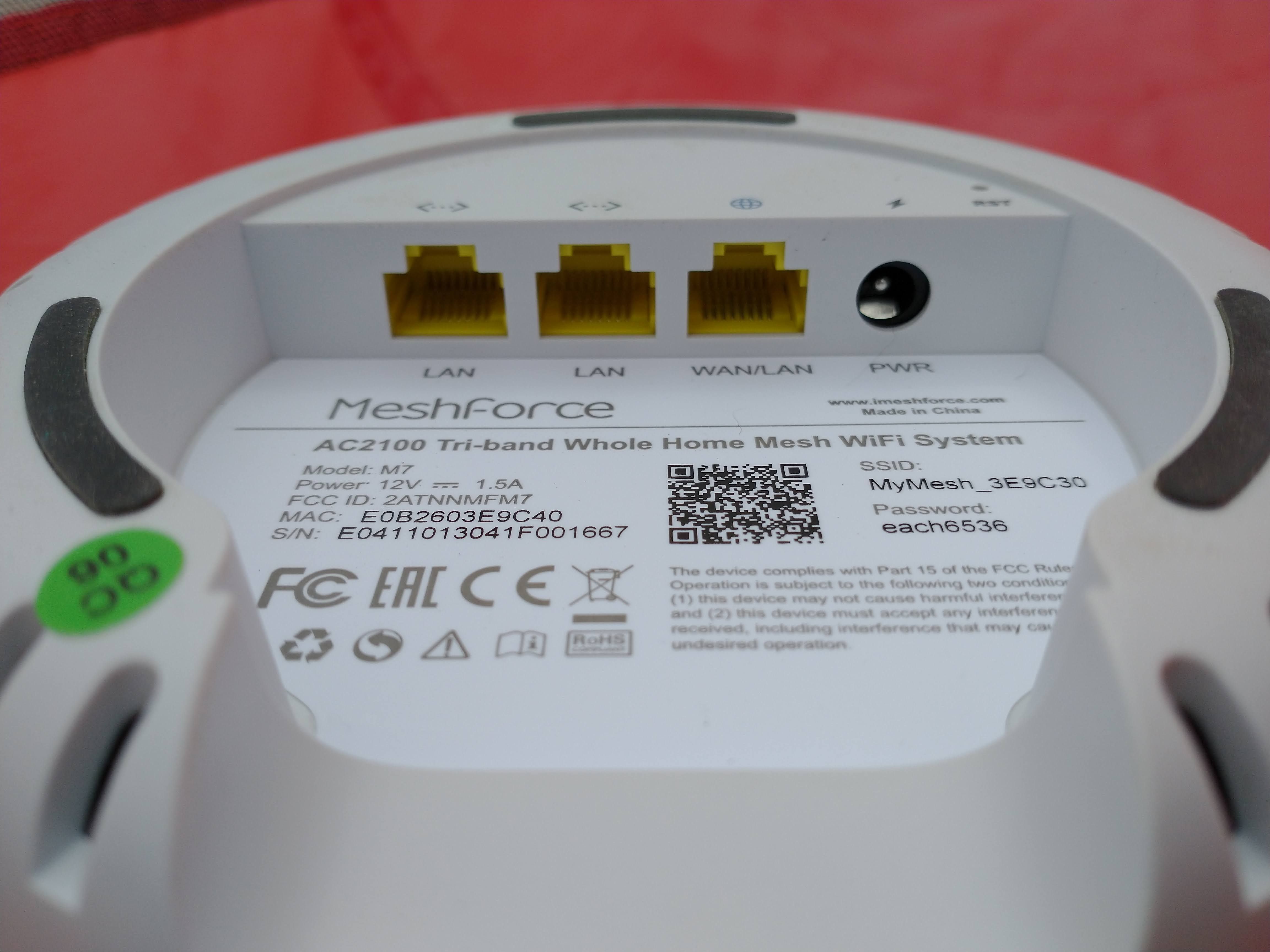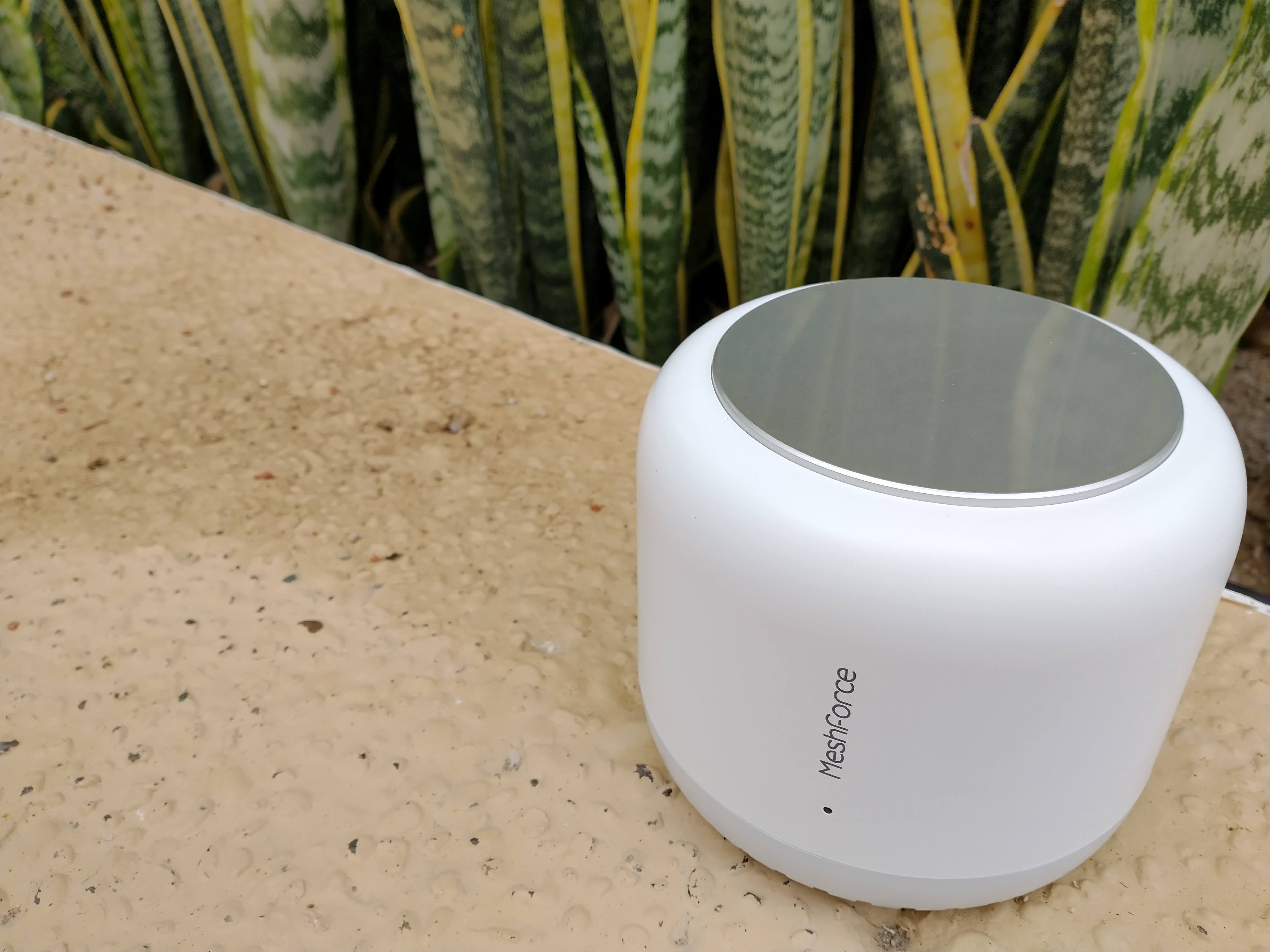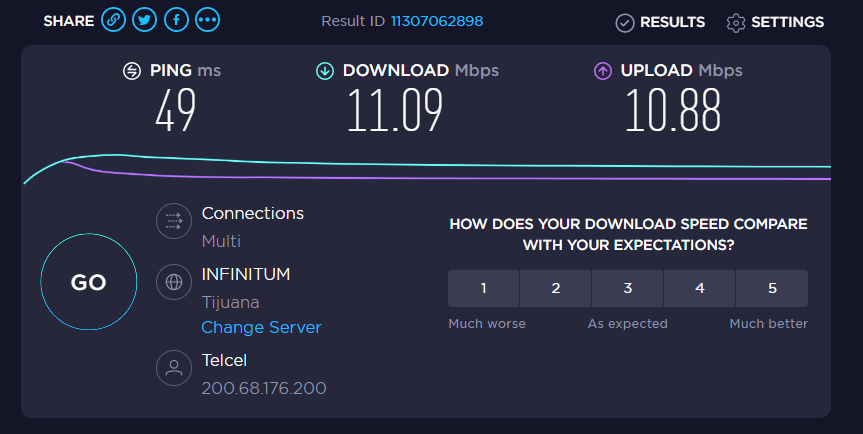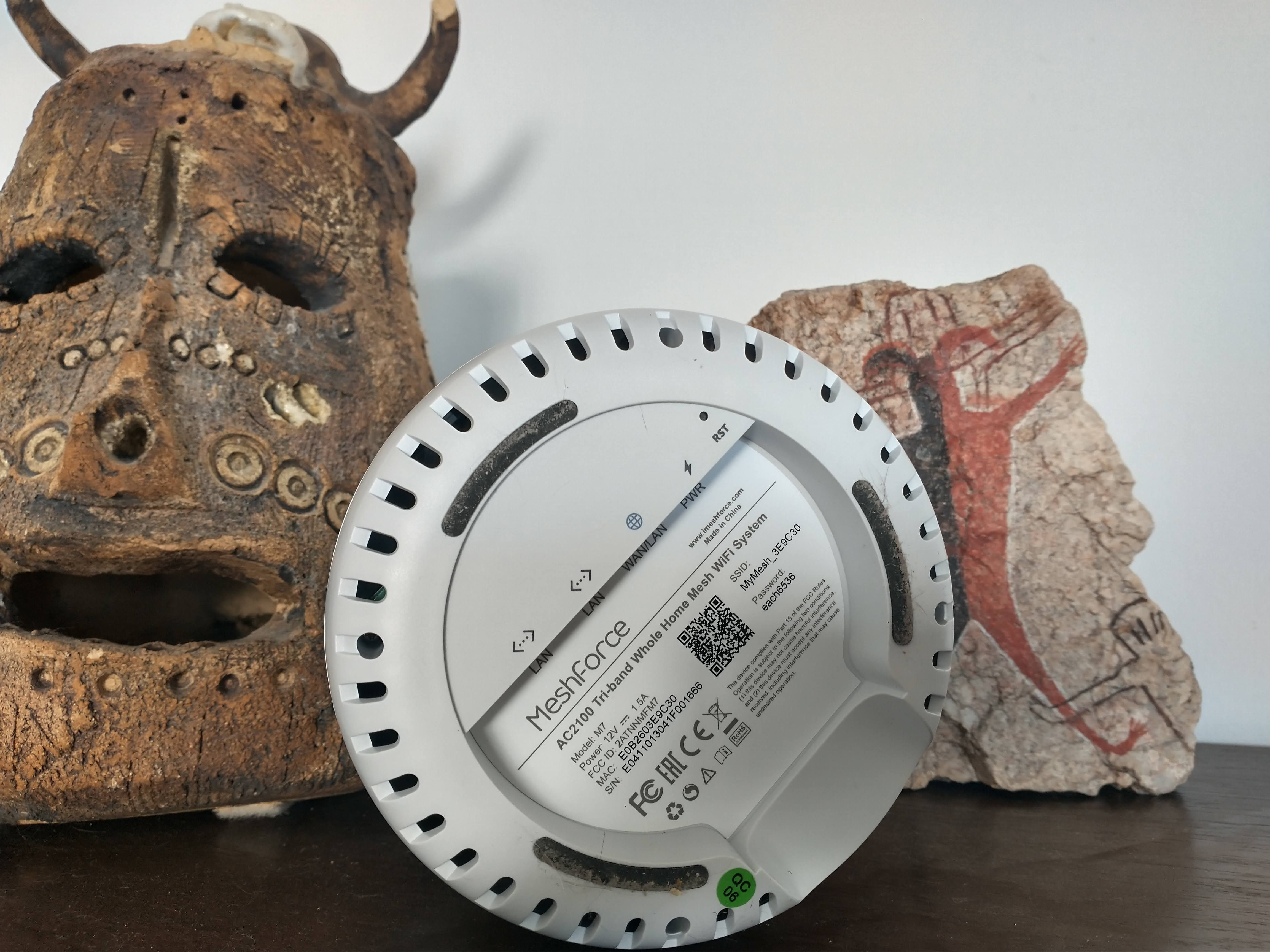The MeshForce M7 tri-band router is an excellent way to improve the Wi-Fi signal throughout your whole home. With sleek components and a straightforward setup procedure, it's suitable for any house and users of all abilities.
- SSID Broadcast
- Beamforming
- Smart QoS
- Brand: Meshforce
- Range: 6,000 square feet
- Wi-Fi Bands: Tri-band AC2100
- Ethernet Ports: Yes
- USB Ports: None
- MU-MIMO: Yes
- Mesh Network Compatible: Yes
- Parental controls
- Guest network
- Aesthetic design
- WPS
- Dedicated backhaul
- No USB ports
- Lack of indicators on the unit
- Cheaper mesh systems are available
Wi-Fi networks can be a fickle beast. You might find that you have a great signal in one part of your home, but when you move a few feet in a different direction, the performance falls off a cliff.
Many factors can cause the issue. It could be the location of your router, the location of your walls, the materials used to build your home, or simply poor-quality equipment from your ISP.
When people encounter such issues, many turn to repeaters, powerline adaptors, and other inferior solutions. These solutions are rarely worth the money; the best approach is to buy a mesh router system.
Today, we put the MeshForce M7 Tri-Band Whole Home Mesh Wi-Fi System through its paces. Keep reading to find out more.
We've also secured an exclusive 10% off coupon for MUO readers! Just enter the coupon code MQRUSOZV at checkout for 10% off.
What's in the Box?
MeshForce sent us the three-pack version of the M7. Inside the box, you'll find three of the M7 units along with three power cables, a single ethernet port to connect one of the router units to your existing hardware, a quick start guide, and a small product registration card.
If you enjoy the "unboxing experience," you're going to be disappointed. There is nothing flash about the exterior packaging, and within the box, all the nodes are packed in regular cardboard plastic wrapping.
In fairness, considering this is a tri-band mesh router with three nodes for less than $300, it's not surprising that the company has opted to save on its packaging.
Product Design
The cylindrical three units are all identical, meaning you can connect any of them to your existing ISP's modem. Each is plain white with a silver disk affixed to the top. The silver disk helps to add a touch of class to what is otherwise a very plain design.
There are ventilation holes around the bottom of each unit, and underneath you'll find the two LAN ethernet ports, a WAN/LAN ethernet port, the power connection, and a tiny device reset button.
The side of the node has a solitary LED light. When it's solid green, your Wi-Fi connection is good; when it's yellow, your connection is average; when it's red, there is no connection.
The big drawback of the design is the size of each unit. Their bulkiness surprised me when I took them out of the box, with the router having a diameter of 5.3 inches (13.4cm) and standing 4.4 inches (11.2cm) high. Their size means the MeshForce M7s are not something you can discretely tuck away on a shelf or on your TV stand; people are going to notice them.
On the plus side, each router is extremely lightweight. There's no danger of it causing injury if it's accidentally knocked off a shelf by a pet or small child.
MeshForce M7 Specs
Here are some of the headline specs you need to know about:
- Processor: Dual-core 900Mhz CPU
- RAM: 256MB DDR3
- Standards and Protocols: IEEE802 11a/b/g/n/ac, IEEE 802.3, IEEE 802.3u, IEEE 802.3ab.
- Mesh Network Standard: IEEE802.11s
- Speed: 2.4GHz, 300 Mbps / 5GHz, 867Mbps
- Frequency: 2.4-2.4835GHz, 5.15-5.25GHz, 5.47-5.725GHz, 5.725-5.85GHz.
- Antennas: Four, all internal
- Security: WPA-PSK/WPA2-PSK
- Firewall: VPN (PPTP/L2TP/IPsec) passthrough, prevention of TCP/UDP flood attacks
- Internet Connection: PPPoE, DHCP, static IP
- Virtual Server: Port forwarding and UPnP
- Modes: Router mode and bridge mode
Setting Up the MeshForce M7
Perhaps the most significant benefit of the MeshForce M7s is the setup process—it is remarkably straightforward and means the product is the ideal mesh router system for anyone who does not consider themselves to be tech-savvy.
Sure, the Asus ZenWi-Fi AC CT8 might offer more power and some more advanced features, but it also costs more, and it is not as easy to get started.
To begin, download the MeshForce app onto your Android or iOS device. Next, connect your router's ethernet port to the WAN/LAN ethernet port on your M7 and hook up the power.
You then need to connect your phone to the M7's default network (you will find it printed on the bottom of the unit). Open the app and you will see a prompt to change the default network name and password.
To add additional nodes to your mesh network, you just need to plug them into a wall socket and the app should detect them automatically. If it doesn’t, open the app, go to Settings > Add a Mesh, and scan the QR code on the base of the unit.
Keep in mind that a unit should be within 32 feet of the next nearest node to optimize performance. You should also keep them away from fridges, microwaves, and other wireless devices.
Performance
Needless to say, setting up a mesh network and placing one of the nodes in my office made a huge difference to the Wi-Fi speed.
In the image below, you can see the speed results when connected to my old ISP router in the lounge (approximately 20 meters from the office):
And here are the results after setting up the mesh network:
Smart Phone App
Aside from using the smartphone app to perform the initial network setup, it is also the way in which you manage your Wi-Fi network remotely.
Using the app, you can set up a DHCP server, enable/disable UPnP, add port forwarding rules, enable QoS, control your parental settings, and a whole lot more.
Device Support
Although the product ships with three units in the box, you can connect up to six MeshForce M7s to your mesh network.
This is really useful if you want to get a strong Wi-Fi signal into a detached garage, guest house, or up a couple of flights of stairs and onto a roof terrace.
The mesh network itself supports up to 75 simultaneously connected devices. Unless you’re a massive tech fanatic or have an extremely large party, you are unlikely to ever hit the limit.
Tri-Band Networking
The tri-band aspect of the MeshForce M7s isn't just marketing lingo—it has a practical benefit.
By constantly assessing the traffic on each router, the system can automatically throw you onto another router in your system if one becomes too bogged down with users. In turn, this helps to optimize bandwidth and upload/download speeds to keep your network running as efficiently as possible.
Smart QoS
Smart QoS is a key feature for gamers and people who stream a lot of online videos. It will automatically reroute anything with high bandwidth usage to give you the best connection possible, and will thus help to eliminate staggering, lags, and buffering.
Guest Network
You can toggle a guest network on and off from within the smartphone app. It is ideal when you have visitors and do not want to grant them access to your main network.
Parental Controls
Like all MeshForce mesh router systems, the M7s come with a parental control feature. You can set it up via the accompanying smartphone app.
It has far fewer features like a dedicated parental control app (for example, you cannot block individual sites or apply age-specific filters), but you can pause the internet with a single button, create a user profile for everyone in your household, and create access schedules on a user-by-user basis.
Amazon Alexa Is Coming
At the time of writing, you cannot use your voice to control your mesh network via Alexa. However, MeshForce insists that the feature is close the completion and will be available to all users in the near future.
Repairability
We often like to refer to iFixit's repairability scores when assessing the viability of fixing a product. Sadly, iFixit has not reviewed the MeshForce M7s.
A quick inspection of the units reveals there are no accessible screws to get inside the device, and a search for spare parts on the web reveals that nothing is available.
If the unit does go wrong, therefore, there is little you can do other than buy a new unit. The units are available individually, so you will not need to buy another three-pack, but it is not ideal.
Should You Buy the MeshForce M7 Tri-Band Whole Home Mesh Wi-Fi System?
Not everyone is going to benefit from a mesh Wi-Fi system. If the Wi-Fi signal around your home is already strong and reliable, there is no need to spend $260 dollars on this system.
Similarly, even if you have a lot of dead spots but you live in a small house or apartment, you will not need the 6,000 square feet of coverage that the MeshForce M7 provides. You would be better advised to opt for one of MeshForce's cheaper options with a smaller range. For example, we reviewed the slightly less powerful MeshForce M3 in 2020 and found it to be excellent.
However, if you live in a large home with poor Wi-Fi coverage, you will be hard-pressed to find a better mesh Wi-Fi system at this price point. If you fall into this boat, the MeshForce M7 Tri-Band Whole Home Mesh Wi-Fi System will revolutionize the way you can use the web when at home.

